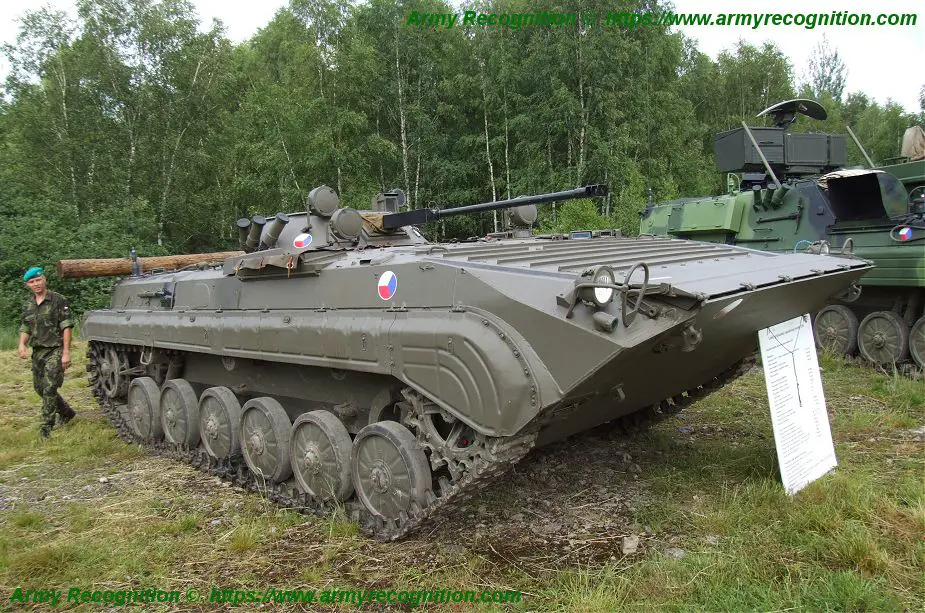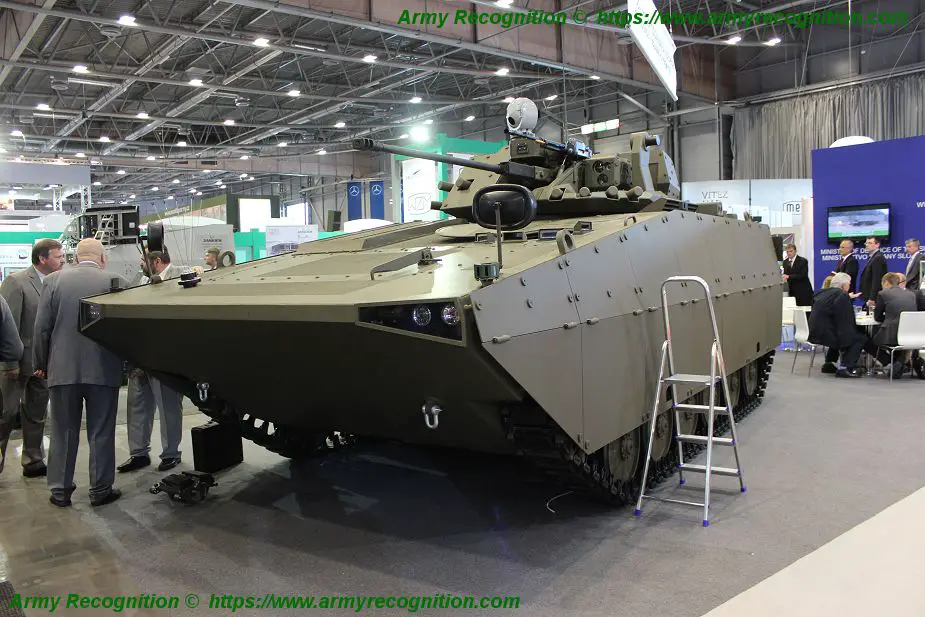Breaking news
Czech Republic ready to replace its old BVP-2 Infantry Fighting Vehicles.
The Ministry of Defense (MoD) of the Czech Republic is planning to launch a tender to replace the BVP-2 (a licensed copy of the Soviet-made BMP-2 platform) armoured infantry fighting vehicles (IFV) in service with the Czech Republic Army since the Cold War.

BVP-2 IFV Armoured Infantry Fighting Vehicle of Czech Army (Picture source Army Recognition)
The military of the Czech Republic has revealed an intention to issue a tender worth CZK53 billion (approximately USD2.5 billion) for the acquisition of 210 single-family armored fighting vehicles (AFV) in mid-2018. According to Defense Minister Karla Slechtova, the winner of the competition might be chosen before the year-end. The deliveries of the new vehicles will start in 2020 and finish in 2024. The requirements to the new land systems will be issued at an early date. "The MoD originally planned to issue a tender in October and select a winner in December 2017, but general elections and delays in forming a new coalition scuttled those plans," the experts of the IHS Jane's think-tank say, commenting the abovementioned announcement.
There are no any known bidders for the program. However, the US General Dynamics consortium (namely, its European subsidiary, the General Dynamics European Land Systems (GDELS) company), the British BAE Systems group, and two German defense companies have already shown their interest in the abovementioned tender.
Despite recent modernization efforts, the BVP-2 remains the backbone of the ACR mechanized infantry. According to the Military Balance 2017 analytical book issued by the London-based International Institute for Strategic Studies (IISS), the service operated 120 BVP-2 (designated as BMP-2) tracked IFVs and 102 Pandur II wheeled IFVs as of early 2017; 98 BVP-1s (a licensed copy of the Soviet BMP-1 vehicle) and 65 BVP-2s were in store.
The military of the Czech Republic does not specify the type of IFV to be acquired under the new tender. However, the vehicle is expected to be a tracked one. The GDELS company may offer its ASCOD 2 (Austrian Spanish Cooperative Development) heavy tracked platform. The BAE Systems group is expected to promote the CV90 Armadillo tracked IFV developed by the BAE Hagglunds company. Germany's enterprises can offer only one option, namely, the Puma tracked IFV developed by the Rheinmetall company.

The project of upgraded BVP-2 called Sakal was unveiled at IDET defense exhibition in 2013. (Picture source Army Recognition)
This is noteworthy that the Czech Army has to intention to upgrade its BVP-2 fighting vehicles to the modern level under the project name of Sakal. The Excalibur Army company (the Czech Republic) offers the modernization of the basic BVP-2 to the BVP-M2 standard. The BVP-M2 has its upper hull redesigned in order to incorporate full-size anti-blast seats. The organic turret of the BVP-2 has been replaced by the TURRA-30 remote control weapon station (RCWS) developed by the Slovak EVPU company. The TURRA-30 unmanned combat module is armed with a 2A42 30 mm automatic cannon, a Kalashnikov PKT 7.62 mm coaxial medium machinegun, smoke dischargers, and two ready-to-launch 9M113 Konkurs (NATO reporting name: AT-5 Spandrel) anti-tank guided missiles.
This is noteworthy that the IFV can be also fitted with the Samson MKII RCWS designed by Israel's Rafael company (such a variant of the platform was unveiled at the Eurosatory 2014 defense show in Paris). The ballistic protection of the BVP-M2 IFV has been reinforced through the installation of applique armor plates. The BVP-M2 is powered by a Caterpillar C9.3 engine with a power output of 300 kW.
Therefore, all the BVP-2 IFVs of the ACR are expected to be phased out and scrapped by the mid-2020. It should be mentioned that the Czech Republic and Poland remain the biggest users of the BMP-1/BMP-2 infantry fighting vehicles among Eastern European NATO member countries.


























